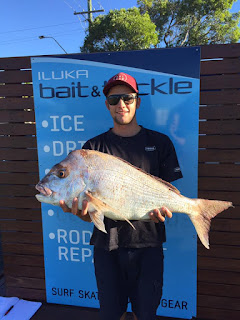It seems the Abbott-Turnbull Government is incapable of learning from past mistakes……..
The Sydney Morning Herald, 30 August 2014:
Australia risks getting
swept up in a wave of litigation by foreign corporations wishing to sue over
unfavourable domestic laws, experts warn, after the government rejected a bill
to ban controversial trade agreements.
A Senate committee on Wednesday rejected the bill to ban ISDS clauses from
future treaties, put forward by Greens senator Peter Whish-Wilson.
The clauses allow a
foreign company to sue a government if it believes its laws have harmed its
profit.
The rejection of the
bill follows a warning by High Court Chief Justice Robert French that the
provisions have the potential to challenge the power-base of the High Court and
create uncertainty among litigants.
It also comes as the
government negotiates one of the biggest trade deals in Australian history, the
Trans-Pacific Partnership, which includes ISDS clauses.
ISDS clauses were
originally put in place to safeguard the interests of companies operating in
countries that lacked rule of law. However, health organisations and
environmental groups argue they pose a threat to regulation that protects a
country's citizens' best interests.
According to the United
Nations Conference on Trade and Development, the number of ISDS cases
internationally has doubled in the past 10 years to 568, with claimants from
the EU and United States accounting for 75 per cent of cases.
The disputes are filed
through international arbitration courts that have been criticised for their
lack of transparency, and there is no right to appeal.
Professor Thomas Faunce,
at the Australian National University College of Law, has described the
provisions as an "affront to the rule of law".
"You have these
foreign stakeholders influencing - quite openly - the policy of our
society," he says. "It is a complete re-organisation of sovereignty
in our country."
It took the Australian Government four years and an unknown number of dollars before the case was thrown out because of lack of jurisdiction.
The Department’s website further states:
To date, a record number of WTO members (in excess of 40) have joined those disputes as third parties.
On 5 May 2014, the WTO Director-General appointed Mr Alexander Erwin (Chair, South Africa), Professor François Dessemontet (Member, Switzerland) and Dame Billie Miller (Member, Barbados) as panelists to hear the disputes. All five disputes will be heard together, pursuant to a harmonised timetable.
In response to Australia's request, the panel issued preliminary rulings on 19 August 2014 regarding the scope of the complainants' claims. These rulings were published on 27 October 2014.
The chair of the panel informed the Dispute Settlement Body on 10 October 2014 that the panel expects to issue its final report to the parties in the second half of 2016…..
Two challenges to the tobacco plain packaging legislation were heard by the High Court of Australia between 17–19 April 2012: British American Tobacco Australasia Limited and Ors v. Commonwealth of Australia and J T International SA v. Commonwealth of Australia.
On 15 August 2012, the High Court handed down orders for these matters, and found that the Tobacco Plain Packaging Act 2011 is not contrary to s 51(xxxi) of the Constitution.
On 5 October 2012 the court handed down its reasons for the decision. By a 6:1 majority (Heydon J in dissent) the court held that there had been no acquisition of property that would have required provision of 'just terms' under s51(xxxi) of the Constitution….
After all that voter’s wake up to this in Week 5 of the federal election campaign…….
The Turnbull government is considering adding a controversial provision to the Japan-Australia free-trade agreement that would allow foreign corporations to sue the Australian government.
It has been negotiating with Japan’s government about the plan but no conclusion has been reached.
ISDS provisions allow foreign corporations to sue the Australian government in an international tribunal if they think the government has introduced or changed laws that significantly hurt their interests.
The tobacco giant Philip Morris used an ISDS provision in the Hong Kong-Australia investment treaty, signed in 1993, in its failed attempt to sue the Australian government over the introduction of plain-packaging laws by the former prime minister Julia Gillard in 2012.
If such a provision is added to the Japan-Australia agreement, it means all four of the major trade deals signed by the Abbott-Turnbull governments will include the same provision – the deals with Japan, China, South Korea and the Trans-Pacific Partnership, which includes Pacific rim countries including the US.
A spokesman for the trade minister, Steve Ciobo, confirmed negotiations had begun.
“Japan and Australia have commenced the review – nothing has yet been agreed,” the spokesman said.
A spokesman for the Department of Foreign Affairs and Trade has also confirmed that Australian and Japanese officials have met to discuss the ISDS provision, with no decision taken.
The negotiations have been triggered by a relatively unknown clause in the Japan-Australia agreement, which was signed by the Abbott government in 2014.
The clause states that if Australia’s government signs any future trade deal with another country that includes an ISDS provision then the Japan-Australia deal would be subject to an automatic review “with a view to establishing” an ISDS provision in it.
The trigger for such a review was the China-Australia free-trade agreement, which came into force on 20 December 2015, because it included an ISDS provision…..


















